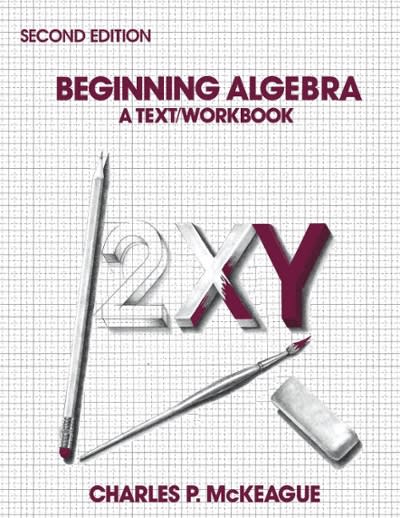Question
What methods did we employ in this experiment? On each trial you rated the likeability of an individual based on a photo of their face.
What methods did we employ in this experiment?
On each trial you rated the likeability of an individual based on a photo of their face. Many different factors contribute to likeability of a face, and one major effect is that people tend to give higher likeability ratings to people who are roughly the same age as themselves. In this study you saw faces from 32 young (ages 18-32) and 32 old (ages 50 and older) persons. The faces in each set were also half male and half female, but this is not a variable of interest in the current study.
The independent variable is the age of the face. The dependent variable is the likeability rating, with 0 indicating not likeable at all and 100 indicating very likeable. We will use a two-sample t-test to explore whether you show higher likeability ratings for the young faces than for the older faces.
What do we predict participants will do? Why?
Most college students are in the young age group, so we expect that they will give higher likeability ratings for the young faces than for the old faces. If you happen to be an older student, you might also show a bias toward higher likeability ratings for young faces, but it will not be as strong as for younger students.
The statistical analysis below guides you through a two-sample t-test. The null hypothesis is that the mean likeability rating is the same for young and old faces
H0: young -old = 0,
and the alternative hypothesis is that the mean likeability rating is different for young faces and old faces
Ha: young -old 0.
We will use = 0.05.
Formulas
To calculate the t test statistic, you need to first calculate the mean and variance of scores for each condition. This is done in the first four questions. Next, you need to pool the variances using the following formula
s2=(n11)s21+(n21)s22n1+n22,
where n1 and n2 are the sample sizes (number of trials) for the young and old face conditions. s21 and s22 are the variances for the young and old face conditions.
The pooled variance is used to calculate the standard error of the difference of means
sX1X2=s2(1n1+1n2).
Now compute the t test statistic
t=X1X2sX1X2,
which has degrees of freedom df=n1 + n2 -2.
Finally, you can calculate the p-value for the test statistic. This is most easily done with an online calculator. Be sure to use a two-tailed test.
Mean likeability for young faces:
(The difference between your answer and the correct value must be less than 0.01.)
Variance of the likeability for the young faces:
(The difference between your answer and the correct value must be less than 0.01.)
Mean likeability for old faces:
(The difference between your answer and the correct value must be less than 0.01.)
Variance of the likeability for the old faces:
(The difference between your answer and the correct value must be less than 0.01.)
Pooled variance:
(The difference between your answer and the correct value must be less than 0.01.)
Standard error of the difference of means:
(The difference between your answer and the correct value must be less than 0.01.)
t test statistic:
(The difference between your answer and the correct value must be less than 0.01.)
degrees of freedom:
(Your answer must exactly equal the correct value.)
p-value for a two-tailed test:
(The difference between your answer and the correct value must be less than 0.001.)
Do you reject the null hypothesis?:
Trial Age of face Sex of face Likeability rating
1 Young Male 44
2 Young Female 59
3 Young Female 59
4 Young Female 63
5 Old Female 39
6 Young Male 15
7 Young Male 42
8 Old Male 73
9 Old Male 75
10 Young Female 57
11 Young Female 41
12 Young Male 57
13 Young Female 31
14 Old Female 80
15 Old Male 70
16 Old Female 24
17 Old Male 30
18 Old Female 72
19 Old Male 78
20 Old Female 57
21 Old Male 18
22 Old Female 24
23 Young Female 36
24 Young Male 34
25 Young Male 82
26 Old Female 42
27 Old Female 68
28 Old Male 24
29 Young Female 66
30 Old Female 69
31 Young Male 25
32 Young Female 56
33 Young Male 37
34 Old Male 88
35 Young Male 71
36 Young Male 56
37 Old Female 61
38 Young Male 58
39 Old Male 75
40 Young Female 58
41 Young Male 70
42 Old Female 23
43 Young Female 41
44 Old Female 76
45 Old Male 56
46 Old Female 68
47 Young Male 30
48 Old Male 24
49 Young Male 31
50 Old Male 34
51 Young Male 60
52 Old Male 53
53 Young Female 59
54 Old Male 57
55 Old Male 29
56 Young Female 65
57 Young Male 62
58 Young Female 33
59 Young Female 71
60 Old Female 65
61 Old Male 71
62 Young Female 47
63 Old Female 21
64 Old Female 72
Step by Step Solution
There are 3 Steps involved in it
Step: 1

Get Instant Access to Expert-Tailored Solutions
See step-by-step solutions with expert insights and AI powered tools for academic success
Step: 2

Step: 3

Ace Your Homework with AI
Get the answers you need in no time with our AI-driven, step-by-step assistance
Get Started


